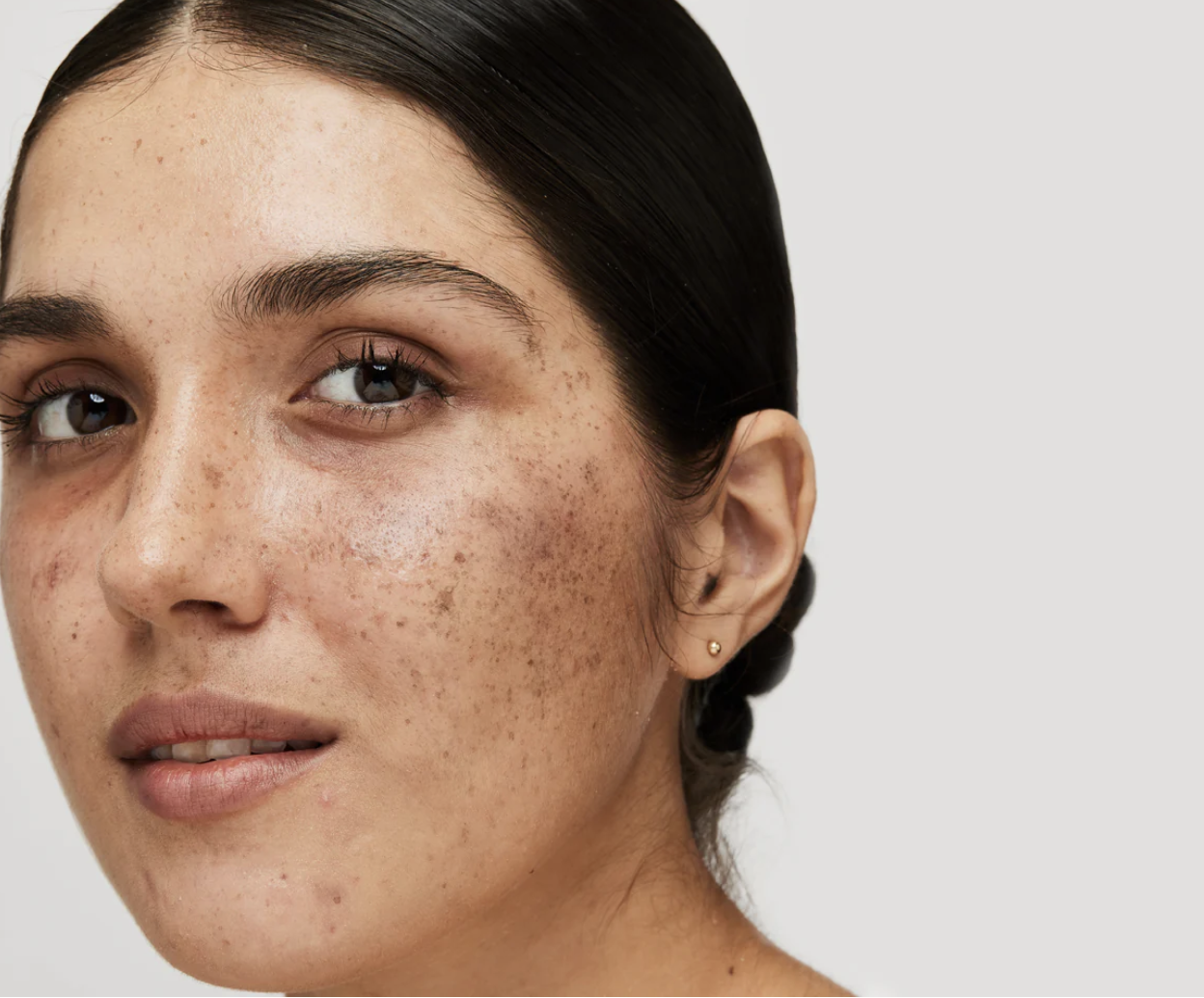Sun Damage vs. Melasma: Why They’re Not the Same—And What Actually Treats Both
Pigmentation problems aren’t all the same—and treating them wrong can make things worse.
Melasma is a common skin condition characterized by brown or gray-brown patches, most often appearing on the cheeks, forehead, nose, upper lip, or chin. It’s caused by an overproduction of melanin, the pigment that gives skin its color, and is often triggered by sun exposure, hormonal changes (such as pregnancy or birth control use), and certain medications or skincare products. While melasma is not harmful or contagious, it can be stubborn and challenging to treat. Managing it usually involves a combination of sun protection, topical brightening agents, chemical peels, and sometimes in-office treatments like lasers or microneedling. With consistency and the right care, melasma can be significantly improved over time.
What is Sun Damage?
Sun damage usually appears as sun spots which are dark spots on the skin that show up from excess sun exposure. They are flat, brown, circular spots that can vary in size. Sun spots occur on skin that is more often exposed to the sun such as arms, shoulders, hands and face and do not typically fade like freckles can. In fact, they can grow and darken over time with re-exposure.
What is Melasma?
Melasma is also a form of hyperpigmentation that shows as brown or gray-brown patches of skin that largely occur around the face. These patches are caused by melanocytes which are the skin cells that produce pigmentation.
Sun Damage vs. Melasma
Sun damage and melasma can look similar to the untrained eye, and the largest difference between them is the differing causes for their appearance. However, some potential differences are melasma can appear symmetrical and sun damage are usually asymmetrical and can pass for freckles. Also, those with fairer skin tone are more likely to develop sun spots than those who develop melasma.
So how do I treat hyperpigmentation?
Sun damage typically requires more intense pigmentation treatment than melasma. An effective treatment for sun damage is Lumecca IPL. Lumecca IPL is a pulsed light therapy that targets melanin and blood vessels that helps with multiple conditions by breaking down pigmentation including sun damage, age spots, freckles, and hyperpigmentation. It also stimulates collagen production, leading to clearer and smoother skin. Treatment sessions can be fairly short at 60 minutes or less, and most people can see effects within 1-3 sessions.
Melasma can use a gentler treatment plan such as a chemical peel. The VI Peel is a medical-grade medium-depth peel that gently removes the top layer of damaged skin to stimulate new cell and collagen production. It is safe and effective for all skin tones and is a quick and effective treatment.
What should I do at home for treatment and prevention?
There are at-home remedies and gentler ways to both prevent and maintain your skin between the slightly more invasive in-house treatments. The most important of these is SPF which is an important product to prevent hyperpigmentation in general as well as prevent potential cancerous sun damage. Ourself Brightening is another treatment option that provides a gentler at-home brightening peel treatment to help even skin tone and lessen fine lines and wrinkles.


